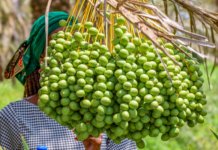80 percent of smallholder famers could be affected by climate hazards such as drought, flooding, and extreme heat across India, Ethiopia and Mexico, according to a new McKinsey & Company report.
The What climate-smart agriculture means for smallholder farmers, report reveals climate change will also severely affect land suitability for crop production, with India alone set to lose 450,000 square kilometers of land currently usable for rainfed rice cultivation. Smallholder farmers produce 32 percent of the world’s agriculture-related greenhouse gas (GHG) emissions but are also among the most at risk from climate change. With these farmers producing a third of the world’s food and demand set to soar 60% by 2050, this could pose a threat to global food security. Despite this, there is currently no clear road map for the types of countermeasures to adopt and how to prioritize the necessary investments and efforts to support smallholders in mitigating and adapting to climate change.
McKinsey’s report identifies 33 climate adaptation and mitigation measures for smallholder farmers, from rotational grazing to dry direct-seeding technologies. It also calls for governments and the private sector to form clusters of similar smallholder farmers to scale up adoption of multiple measures, invest in climate-resilient infrastructure, form national agricultural research systems pioneering new technologies, and help farmers bring sustainable new crops to market. With smallholder farmers disproportionately affected by climate risks, climate-resilient farming practices will also be vital to reducing global inequality and driving inclusive growth.
Additionally, it suggests building land management plans around reducing climate hazards, increased crop insurance and better food security planning to mitigate climate risks, and using taxes, subsidies, and other incentives to encourage sustainable farming. For example, China has changed its subsidy policies to encourage a switch from chemical to organic fertilizers, helping reduce use of chemical fertilizers by 111.5 kilograms per hectare.
The report also reveals further guidance is needed on which measures to prioritize in each region because their applicability varies across and within countries due to different farming systems and practices. For example, fertilizer application rates are five times higher in India than in Ethiopia, thus soil- and fertilizer-related mitigation measures should be a higher priority in India.
Gillian Pais, Partner at McKinsey, said: “With 510 million smallholder farmers across the world, often in locations highly vulnerable to climate change impacts, implementing adaptation and mitigation measures will be critical to their livelihoods. Our insights found that 75 percent of smallholder farmers could feasibly adopt at least three of the adaptation measures we have outlined and the more they implement, the greater climate resilience they will achieve. Moreover, with smallholder farmers accounting for a third of CO2 emissions from agriculture and food supplies, implementing climate-smart agriculture could simultaneously reduce greenhouse gas emissions, support vulnerable populations, and improve global food security.”
Chania Frost, Senior Manager at McKinsey said: “Smallholder farms are fragmented and often have limited access to inputs, new technologies, and financing, which renders climate adaptation and mitigation challenging. Governments, financiers, development organizations, and private-sector players have a key role to play in supporting the global smallholder-farming community’s shift to more sustainable practices and furthering industry inclusivity. This includes prioritizing measures, identifying clusters of farmers for implementation of these measures, and piloting business models or incentives to drive adoption. For example in Africa, we are already seeing actors pilot efforts to connect smallholders to carbon markets or to climate-smart lending, that encourages adoption of these practices.”







